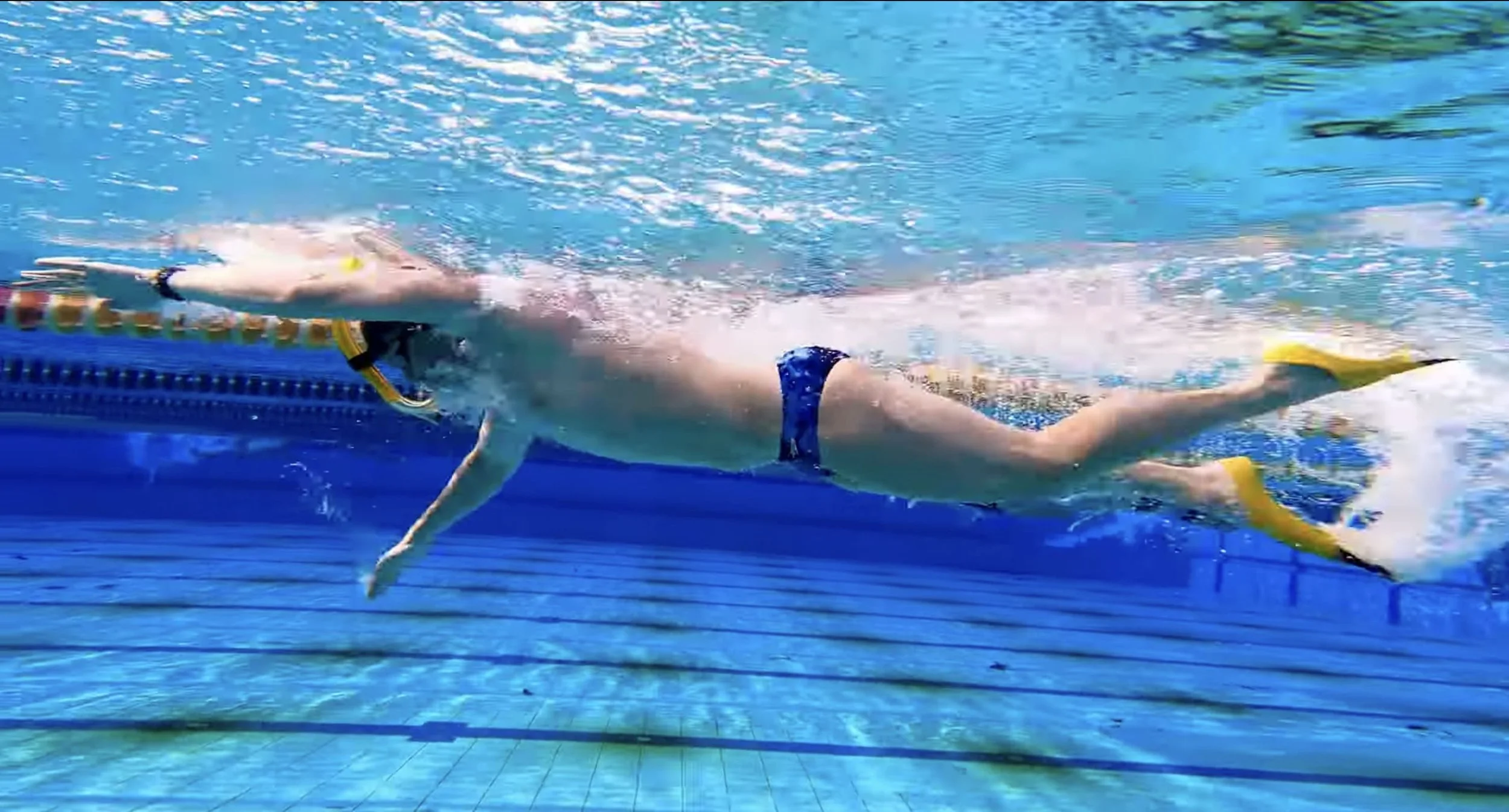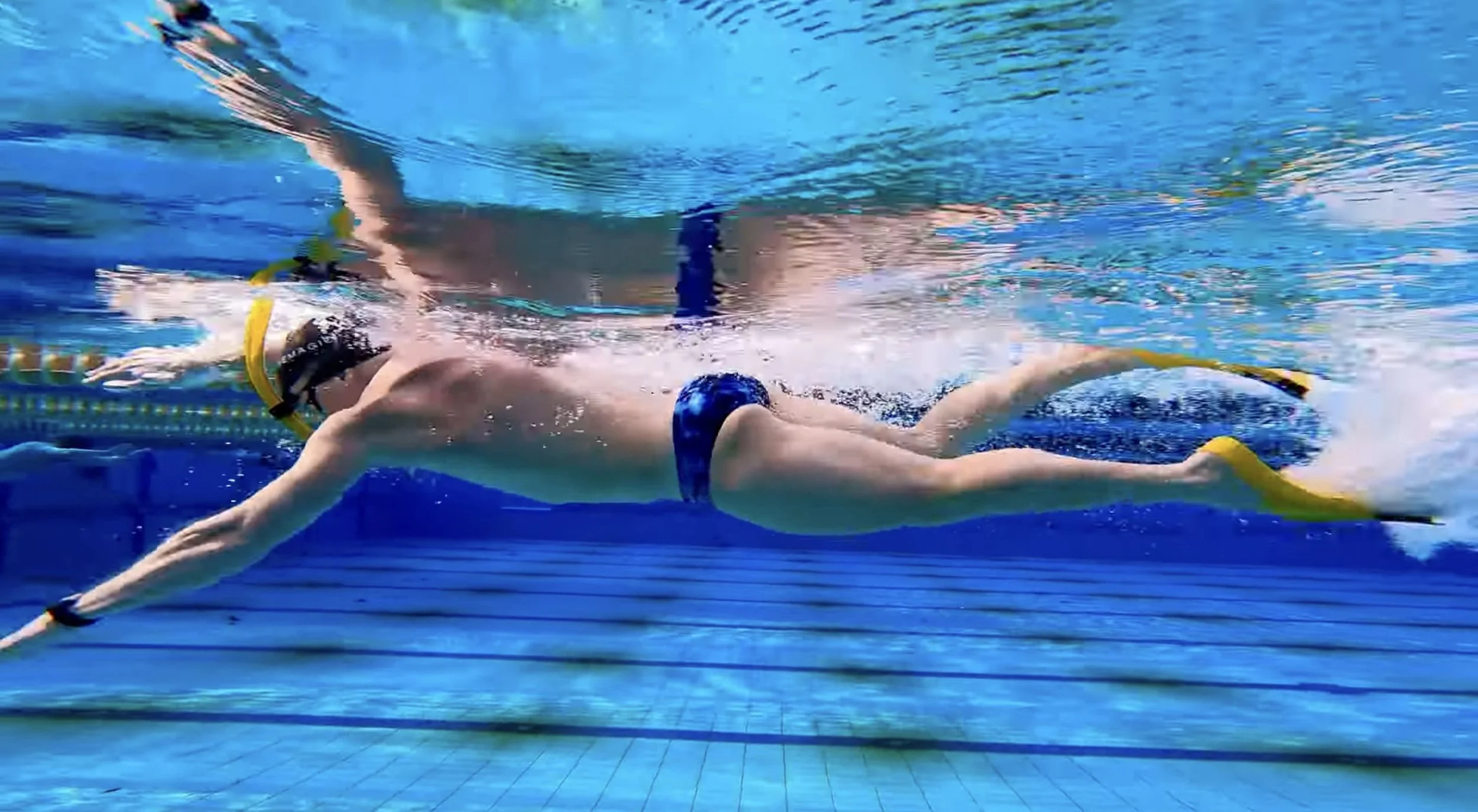Taper in Swimming: How to Peak at the Right Time
/By Dan Daly, CSCS – Train Daly Coaching
1. What Is a Taper in Swimming?
There’s a point in every season when doing more stops helping. That’s where taper begins.
A taper in swimming means gradually reducing training volume so your body can recover, rebuild, and sharpen for race day. You’re not getting fitter during taper — you’re letting the fitness you built rise to the surface.
I often tell swimmers that taper isn’t rest for the sake of rest. It’s strategic recovery. It’s the point where all the hard work comes together. Excellence lives in the fundamentals, and tapering is one of them.
2. Why Tapering Works
Tapering allows your body to absorb months of training. Muscles repair, glycogen stores refill, and the nervous system resets. The result is a stronger, faster, more coordinated version of yourself — the one that’s been hiding under training fatigue.
You might notice sharper turns, better timing, and a cleaner stroke. You start to feel buoyant again, lighter in the water, more in tune with your body. That’s taper working behind the scenes.
But the effect is not just physical. Tapering clears your head. You stop chasing fatigue and start chasing precision. That mental clarity is often what separates a good swim from a great one.
3. Structuring a Swimming Taper
Every swimmer’s taper looks a little different. Still, there are patterns that work.
Most tapers last one to three weeks, depending on your event and training background. Volume drops gradually to about half, but intensity stays high. This is important — you want to keep your feel for race pace without overloading your system.
Technique and race pace become the priority. Streamlining, starts, and turns should take center stage. This is where you refine the habits that will carry you through the final meters when fatigue hits.
Dryland also shifts focus. Instead of cutting weights all together, you reduce volume here as well, performing less sets and reps, but keeping the load and speed just as high. The goal is to stay strong and powerful, without fatigue and soreness.
4. Race-Day Skills to Reinforce
During taper, I like to help athletes zero in on the skills that actually decide races. Too often swimmers obsess over distance per practice, rather than the intensity and details.
Explosive starts are a perfect example. They’re a skill, not just strength — a combination of timing, reaction, and body alignment. The same goes for underwater kick counts. There’s a reason people call it the “fifth stroke.” When you practice consistent kick counts off each wall, you develop rhythm and efficiency that transfers directly into speed.
Even breathing counts matter. If you know exactly when to breathe in your event, you’ll hold form under pressure. That kind of consistency doesn’t happen by accident — it’s trained intentionally during taper.
Turns, too, are different at race pace. I tell swimmers to practice their walls like they mean something. Lazy turns in practice create bad habits. Sharp turns win races.
5. Sample Workouts During Taper
The goal during taper workouts is rhythm and precision, not exhaustion. Here’s how I approach it across different swimmers:
Sprinters need more rest between explosive efforts. I might prescribe short sprints with full recovery, focusing on bodyline and breakout speed.
Mid-distance swimmers often benefit from race-pace 100s or 200s, balancing intensity and control.
Distance swimmers taper gradually, keeping some aerobic work but trimming overall yardage. Their sets stay smooth and steady, with just enough speed sprinkled in to stay sharp.
You can feel when the balance is right — you leave practice energized, not drained.
6. Using Equipment During Taper
The right tools can help you move better without adding fatigue. During taper, I often bring fins and snorkels back into rotation.
Medium-sized fins improve ankle mobility and help reinforce a pointed toe. They boost propulsion without forcing you to muscle through the water. I use FINIS Z2 Gold Zoomers for this reason — compact, powerful, and perfect for taper rhythm work.
A snorkel keeps your head steady and your mind focused on alignment. Without the distraction of breathing, you can feel every connection from fingertips to toes. My go-to is the FINIS Swimmer’s Snorkel — simple, durable, and ideal for stroke refinement.
Check out other go-to swim bag essentials and product discounts in Top 5 Swim Bag Essentials for Smarter, Stronger Training
25% Off Finis Swim Gear
Use The Code DALY25 at checkout to save 25
7. Adjusting Dryland Training
Taper isn’t the time to chase new PRs in the gym. Your focus shifts from strength building to movement quality.
Cut back on volume — total sets x reps. Maintain strength with comparable loads, prioritizing speed of movement, acceleration, and power. The goal is to keep athletes feeling strong and explosive, not sore or fatigued.
Studies have shown an ability to maintain peak strength and power with as little as 1 repetition of a specific movement at the same weight or speed.
8. Common Taper Mistakes
Here are a few habits I warn swimmers about:
Over-resting. Cutting weights all together. Or too long or too aggressive of a training drop. Gradually drop training volume over a short period of 1-3 weeks.
Changing routines. Don’t reinvent your warm-up or diet during taper week. Stick to what’s proven.
Neglecting recovery basics. Hydration, sleep, and nutrition still matter — maybe even more now.
Overanalyzing. Some swimmers start questioning everything. Trust the work. Your body knows what to do.
Tapering is a delicate balance between doing enough and not too much. Err on the side of calm consistency.
9. Recognizing a Good Taper
When taper clicks, you know it. You wake up ready to move. Warm-ups feel crisp. You start hitting fast times without pushing hard.
The biggest sign? Confidence. You can feel that quiet readiness — like your body’s waiting for the whistle. That’s the taper doing its job.
Take the Next Step in Your Training
Tapering isn’t a magic formula; it’s the art of timing. You’ve already done the hard work — now it’s about trusting the process and letting your body express what it’s capable of.
I’ve seen swimmers panic mid-taper, convinced they’re “losing fitness.” But the truth is, you’re not losing anything — you’re gaining clarity. Taper isn’t the end of training; it’s the reveal.
“You don’t build confidence by grinding harder in the last week. You build it by believing in the work you’ve already done.”
Want structured dryland workouts that flow seamlessly into your swim season — including taper and recovery phases?
Join my Monthly Dryland Training Subscription. It’s built specifically for swimmers who want to swim faster, feel stronger, and recover smarter, with strategic power plans every 8 weeks.
Start Your Free 7-Day Trial – $29/month after | Cancel Anytime
-
A taper in swimming is a planned reduction in training volume not intensity before a major race. The goal is to let your body recover from accumulated fatigue while maintaining speed, power, and technique. This strategic rest period helps swimmers reach peak performance by restoring energy levels and sharpening focus.
-
Most swimmers taper for 1 to 3 weeks, depending on the type of event and overall training load. Sprinters and younger swimmers often need a shorter taper, while distance and elite-level athletes may benefit from a longer, gradual reduction in volume. The key is to monitor how your body feels — too long or too short can both blunt performance. The best taper for you may take trial and error.
-
Yes. While overall distance decreases, intensity should stay high. Race-pace and sprint efforts are essential to maintain your feel for the water and preserve speed. The goal is to do less work but with greater precision and quality.
-
Absolutely — just adjust the volume. Maintain peak strength with equally heavy lifts, but with few sets and reps. Shift towards a focus of fast explosive power lifts 4-8 weeks out to improve the rate and amplitude of muscle contractions.
-
Item description


